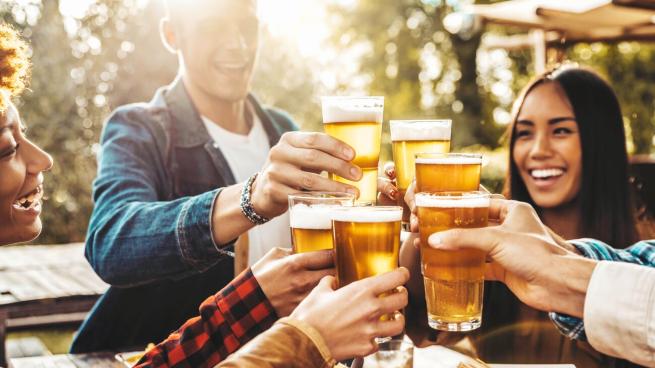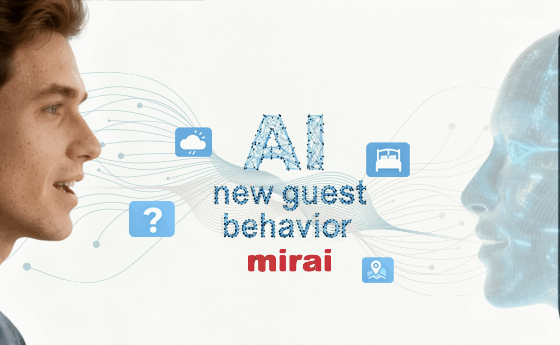
As the cost-of-living skyrockets and consumers become more discerning than ever, the restaurant industry faces intensified competition. While the guest experience has always been crucial, it’s now even more important due to the rise of digital touchpoints that shape customer perceptions and expectations. From the moment a potential customer encounters your restaurant’s brand online to the follow-up interactions after their visit, every touchpoint matters.
PwC found that consumers are willing to spend up to 16% more for excellent experiences and service. Plus, a one-star increase in Yelp ratings can boost a restaurant’s revenue between 5% and 9%. These figures underscore the critical importance of delivering a seamless, memorable experience throughout a consumer’s entire dining journey.
The Influence of Your Online Presence
Social media, websites, and review apps have revolutionized the hospitality industry, heavily influencing consumer choices and brand perception. These platforms provide restaurants with unprecedented opportunities to engage with customers both before and after their dining experiences. Consumers often begin their journey by exploring a restaurant’s website for menus, chef and owner information, and ambiance details, and then frequently extend their research to social media, analyzing profiles for imagery, creative captions, and overall aesthetic.
A 2024 BrightLocal survey found that 77% of customers visit two or more review sites before deciding which businesses to patronize. Positive reviews enhance a restaurant’s reputation and attract new customers, while negative reviews, if not promptly addressed, can deter potential diners.
Leveraging Technology to Enhance the Consumer Journey
The above PwC research found that 32% of customers would turn away from a business after one negative experience. So, every stage of the guest journey—from the initial online interaction to the post-dining follow-up—must be carefully managed to meet and exceed expectations. Generous service, complimentary extras, and personalized touches are essential in creating an experience that leaves a lasting positive impression.
To meet these expectations, restauranteurs can leverage technology to enhance the consumer journey, ensuring a memorable dining experience at each touchpoint. Here are some key strategies:
Pre-Dining:
- Maintain a user-friendly, mobile-optimized website with updated information and engaging content. This includes menu details, hours of operation, location, and reservation options.
- Implement SEO strategies to improve visibility and drive traffic to your website. This can include optimizing your site for relevant keywords, creating valuable content, and updating your Google Business Profile.
- Develop aesthetic and informative social media profiles showcasing your restaurant’s offerings and ambiance. Regularly post high-quality photos and videos, interact with followers, and use stories to highlight daily specials or events.
- Utilize online reservation systems like OpenTable or Resy to streamline booking. These platforms also collect valuable data on customer preferences, which can then be used for personalized marketing efforts.
During Dining:
- Implement advanced POS systems for seamless transactions and integration with other technologies like reservation systems and loyalty programs.
- Consider using digital menus, QR codes, smart lighting, and sound systems to enhance the dining ambiance. For fast-casual or chain restaurants, consider self-ordering kiosks to expedite service.
- Ensure staff are well-educated on your brand and partnering brands, trained to provide excellent service through unique serve strategies, and equipped to handle digital tools. A knowledgeable and friendly staff can significantly boost the dining experience.
Post-Dining:
- Building a digital dossier for customers allows you to personalize their return experience by greeting them by name, inquiring if they would prefer their usual order, or recommending something they might enjoy based on past visits. You can also note special occasions such as birthdays and anniversaries.
- Use email and SMS marketing to engage customers post-visit. Send personalized follow-up messages thanking them for visiting, promoting upcoming events, or offering special deals. You can even call guests to ensure they had a great dining experience, further elevating that personal experience.
- According to the aforementioned BrightLocal survey, 34% of consumers expect a response to their reviews within two to three days. Actively manage online reviews by responding to customer feedback—both positive and negative—promptly and professionally.
By integrating these technologies, restaurants can create seamless and enjoyable experiences for guests, from the initial online interaction to the follow-up engagement. This comprehensive approach assures that every touchpoint is optimized to meet and exceed customer expectations, driving loyalty and repeat business.
ABOUT THE AUTHOR
Kim Lawton is the founder and CEO of Enthuse, a New York City-based marketing agency that teaches the hospitality world to love your brand. Kim has 25 years of proven experiential operations and marketing experience spanning branded consumer products, and she has cross-functional expertise in both creative development and marketing campaign activation, measurement, and management.







